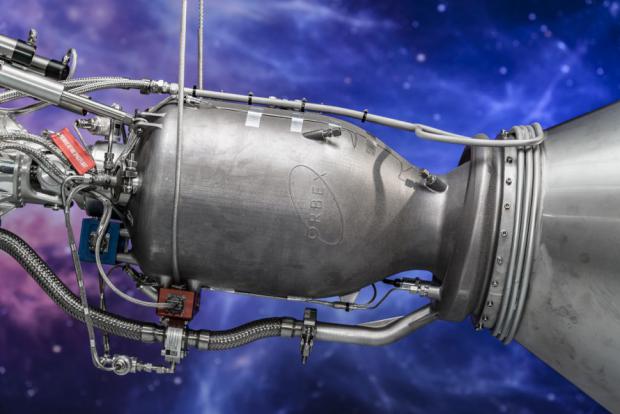
Breaking News
 They've Been Feeding You Poison (And Calling It Food)
They've Been Feeding You Poison (And Calling It Food)
 Tattoo ink may cause prolonged changes to the immune system
Tattoo ink may cause prolonged changes to the immune system
 Travel gadget promises to dry and iron your clothes – totally hands-free
Travel gadget promises to dry and iron your clothes – totally hands-free
 Duckweed: A sustainable, protein-packed food source smeared by Big Ag
Duckweed: A sustainable, protein-packed food source smeared by Big Ag
Top Tech News
 Perfect Aircrete, Kitchen Ingredients.
Perfect Aircrete, Kitchen Ingredients.
 Futuristic pixel-raising display lets you feel what's onscreen
Futuristic pixel-raising display lets you feel what's onscreen
 Cutting-Edge Facility Generates Pure Water and Hydrogen Fuel from Seawater for Mere Pennies
Cutting-Edge Facility Generates Pure Water and Hydrogen Fuel from Seawater for Mere Pennies
 This tiny dev board is packed with features for ambitious makers
This tiny dev board is packed with features for ambitious makers
 Scientists Discover Gel to Regrow Tooth Enamel
Scientists Discover Gel to Regrow Tooth Enamel
 Vitamin C and Dandelion Root Killing Cancer Cells -- as Former CDC Director Calls for COVID-19...
Vitamin C and Dandelion Root Killing Cancer Cells -- as Former CDC Director Calls for COVID-19...
 Galactic Brain: US firm plans space-based data centers, power grid to challenge China
Galactic Brain: US firm plans space-based data centers, power grid to challenge China
 A microbial cleanup for glyphosate just earned a patent. Here's why that matters
A microbial cleanup for glyphosate just earned a patent. Here's why that matters
 Japan Breaks Internet Speed Record with 5 Million Times Faster Data Transfer
Japan Breaks Internet Speed Record with 5 Million Times Faster Data Transfer
British Rocketmaker Orbex Unveils Prototype of Small-Satellite Launcher

FORRES, SCOTLAND — Orbex, a United Kingdom-based rocket startup, just unveiled part of its new Prime small-satellite launcher, which the company hopes will be lofting spacecraft into low-Earth orbit from the north of Scotland at a rate of one a month by the mid-2020s.
At a Feb. 7 event here at Orbex's base, company representatives showed off the completed engineering prototype of the two-stage Prime's upper stage, which is made of lightweight carbon fiber and aluminum composites and features the world's largest 3D-printed rocket engine.
This engine uses biopropane as a fuel along with liquid oxygen; it produces 90 percent fewer CO2 emissions compared to conventional hydrocarbon fuel-fired rockets, company representatives said. [The Effects of Global Warming]
"The use of biopropane gives us some really unique options," Orbex Chief Technology Officer Jonas B. Bjarnø, who previously worked on a plethora of high-profile international missions including NASA's Juno Jupiter probe, told Space.com during the Feb. 7 event, which also marked the opening of Orbex' Forres factory.
"Biopropane stays liquid even at low temperatures and has the ability to densify," Bjarnø said. "When you cool it from the ambient temperature to the same temperature of liquid oxygen, which we use as an oxidizer, its density increases by about 30 percent. That enables the vehicle to carry more fuel in the same volume."
Prime as a whole will be up to 30 percent lighter and 20 percent more fuel-efficient than other small-satellite launchers currently in development, Orbex representatives said
The rocket will be able to carry between 330 and 440 lbs. (150 to 200 kilograms) of payload to an altitude of 780 miles (1,250 kilometers) and is, according to Orbex CEO Chris Larmour, designed to be reusable.
"A large part of the stage 1 will be reusable," Larmour told Space.com. "Certainly the engine pack of the stage 1 is a huge part of the cost of the vehicle. If we can get that back, that's a significant saving."
He said the first stage will be designed to land in the sea but declined to elaborate on the technical specifics, saying the technology is currently patent-pending.
Orbex aims to launch Prime for the first time in late 2021, from the Sutherland spaceport in northern Scotland. British satellite maker Surrey Satellite Technology Ltd (SSTL) will provide an experimental payload for the first flight. Orbex is also considering launching from Norway or the Azores, an island chain in the mid-Atlantic, as a backup plan.
"Here in Forres, we will be building the structures and the avionics for Prime," said Larmour. "We also have manufacturing facilities in Copenhagen, where we will be building the propulsion system. We will integrate it here and take it to the launch site in Sutherland on a single truck."
He said he expects European small-satellite makers to be keen on the opportunity to launch from Scotland instead of having to transport their spacecraft to Kazakhstan or India.

 Advanced Propulsion Resources Part 1 of 2
Advanced Propulsion Resources Part 1 of 2

